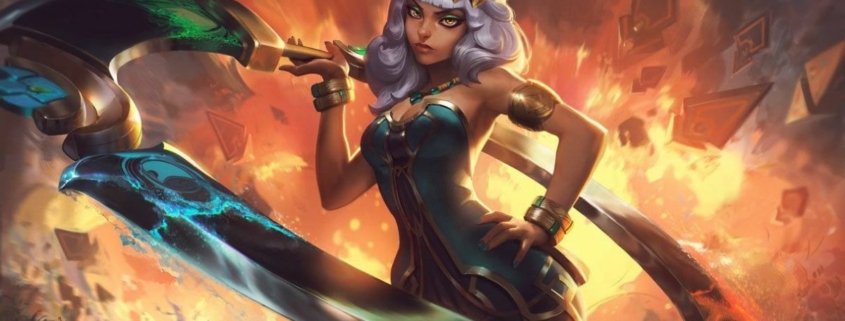A gruelling, globetrotting challenge pushed me out of my League of Legends comfort zone








DIARY
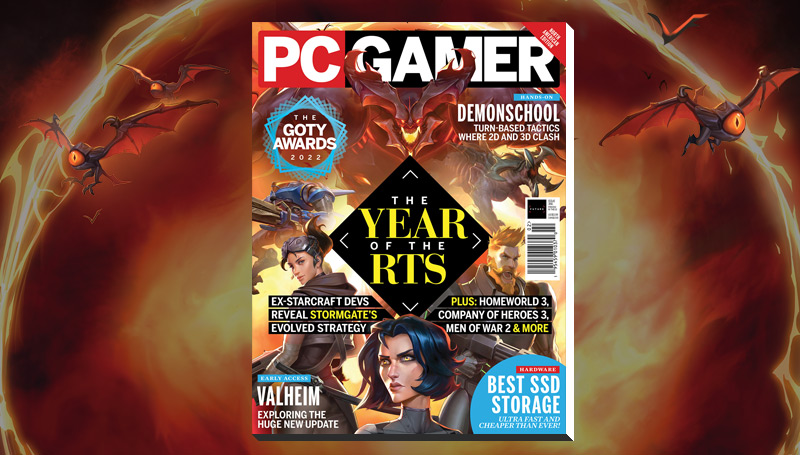
This diary first appeared in PC Gamer magazine issue 378 in December 2022. We do one every month, taking on new challenges and approaching our favourite games from entirely new angles—and letting you know how we got on.
After 11 years, League of Legends is anything but stale. Strategies shift and evolve with new characters, new features, and a community full of prolific theory-crafters. But after all that time, most players have found a groove, sticking to a handful of comfort zone champions in a way that makes it harder to keep things feeling fresh.
Last year, however, the game’s developers cooked up a means to try to break players out of their ruts. Challenges are League of Legends’ take on achievements, rewarding players for anything from scoring kills to buying skins. Hidden within them are the ‘Globetrotter’ challenges—and our aim is to complete all 13 of them.
The rules are mostly predetermined by the challenges themselves. First, we have to play as a group of five. That shouldn’t be difficult, but as my group of gaming buddies gets older, real life is starting to make it a little harder to pull the whole gang together.
Second, we have to play as a group of champions who all hail from the same in-game region. League of Legends’ world-building is pretty impressive, with its 160-odd characters spread across 13 of those regions. Some areas are well-populated with a wide variety of champions, making team creation pretty easy. Others are emptier, or so thematically-focused that strategy goes out the window.
We start, unsurprisingly, with the former. The Freljord is a great tundra home to a number of icy, Viking-like heroes. It has a lot going for it when it comes to putting together a proper team; several of its characters complement each other perfectly, their ultimate abilities lining up for devastating ‘wombo- combos’. Time everything just right, and a team-wide skirmish can be over before it starts. As an added benefit, all of us have a Freljordian champion that we already know how to play. I’m even on my ‘main’—boar-riding clan chief Sejuani. That kind of luxury is one that we definitely won’t have later on.
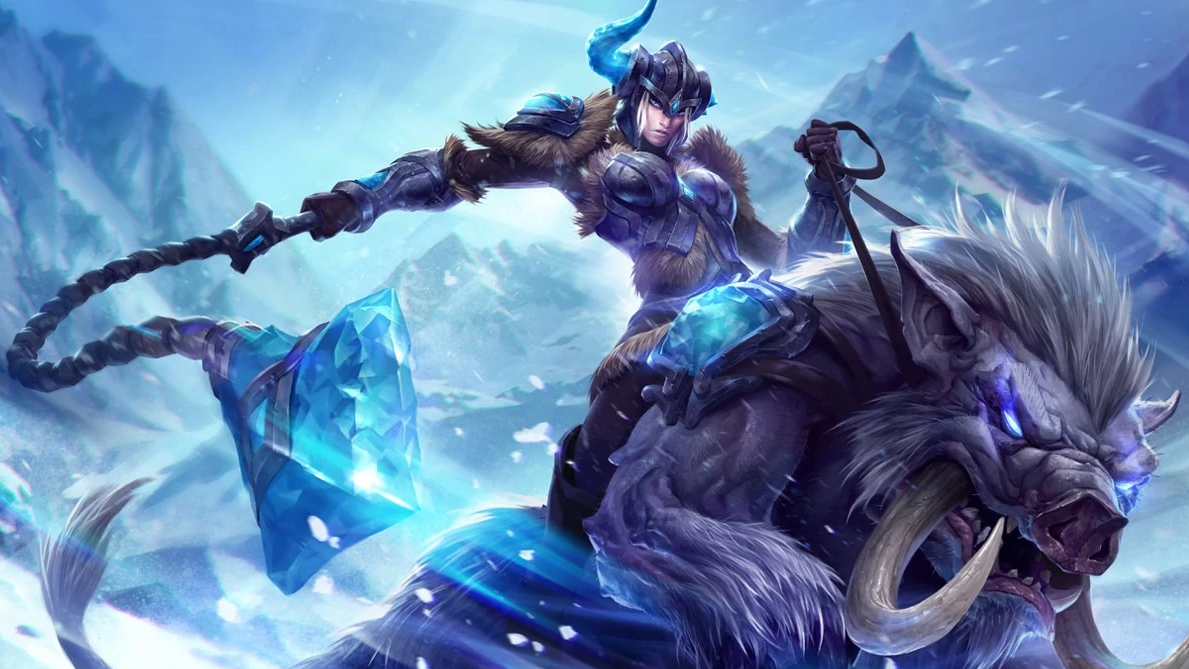
The result is utter domination. Frozen in place, our first enemy hardly even puts up a fight. Buoyed by our early and resounding success, we move swiftly to our next region, Bandle City. This is the home of the Yordles, a notably cute-and-cuddly race, and has no resounding theme, which means that there are options for almost every playstyle. It also means we can abandon convention almost immediately.
Traditionally, the League of Legends meta is fairly rigid; some kind of fighter usually dwells in the topmost of the game’s three ‘lanes’; a mage occupies the middle; the bottom lane is shared between a ranged DPS and a support (perhaps a tank, or shield-giving ‘enchanter’). The team is rounded out by a floating ‘jungler’, a much more flexible role that helps provide what your team might be lacking.

For Bandle City, however, we throw the meta out the window. We place two mages, Ziggs and Veigar, in the botlane, using their abilities in tandem to trap enemies in a magical cage before blasting them into the wall, temporarily stunning them. There’s minimal counterplay at the best of times, but coupled with another champ, Poppy, whose ability set revolves around shunting opponents into walls, it’s crippling.
This is our first genuine breakthrough. The team synergises brilliantly in multiple different ways, and while there are a couple of tweaks to make, it’s something we might actually play again. The game is another stomp, and with two regions down, we look to The Void.
Into the abyss
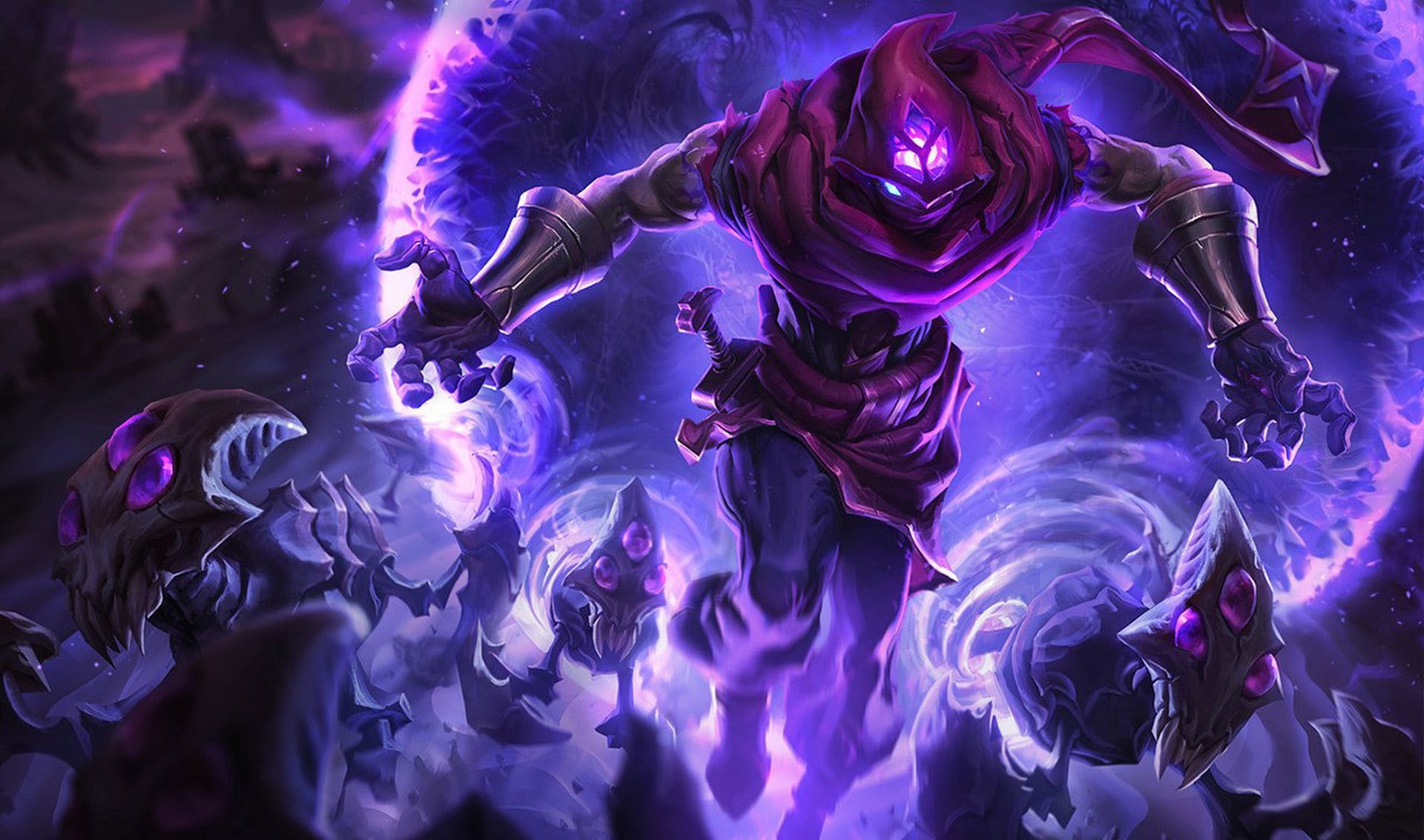
This was always set to be one of our most daunting tasks. Thematically, champions from The Void are defined by hunger. That means no traditional supports, so we swap our midlaner into botlane to play a mage. That leaves a gaping hole in our team, and I’m forced to fill it.
For ten years I’ve avoided playing mid. My skills lie with tanks, not mages. Maybe one in 100 games sees me venture clumsily to the centre of the map. Yet.. here I am. As Malzahar—a champion whose kit revolves around gnawing damage over time—I get off to a dreadful start, cut to ribbons by the wrist-bladed assassin Zed. The rest of the team is on comfort picks, but I’ve never played Malzahar before. I know my job is simply to weather the storm, but I quickly fall a long way behind. Even as Zed’s power starts to wane, his allies grow in strength, and at one point we’re pinned into our base, facing down our first loss.
That’s where our third rule comes into play. To dial up the challenge, we can’t move to a new region until we win. Assuming a traditional 50/50 win/loss ratio, that would be tricky, but we’re using slapdash teams with champions we don’t often play. Playing a champion for the first time is known to drop your win rate by 10% or more. The stats don’t mention what to expect if an entire team is experimenting with something new.
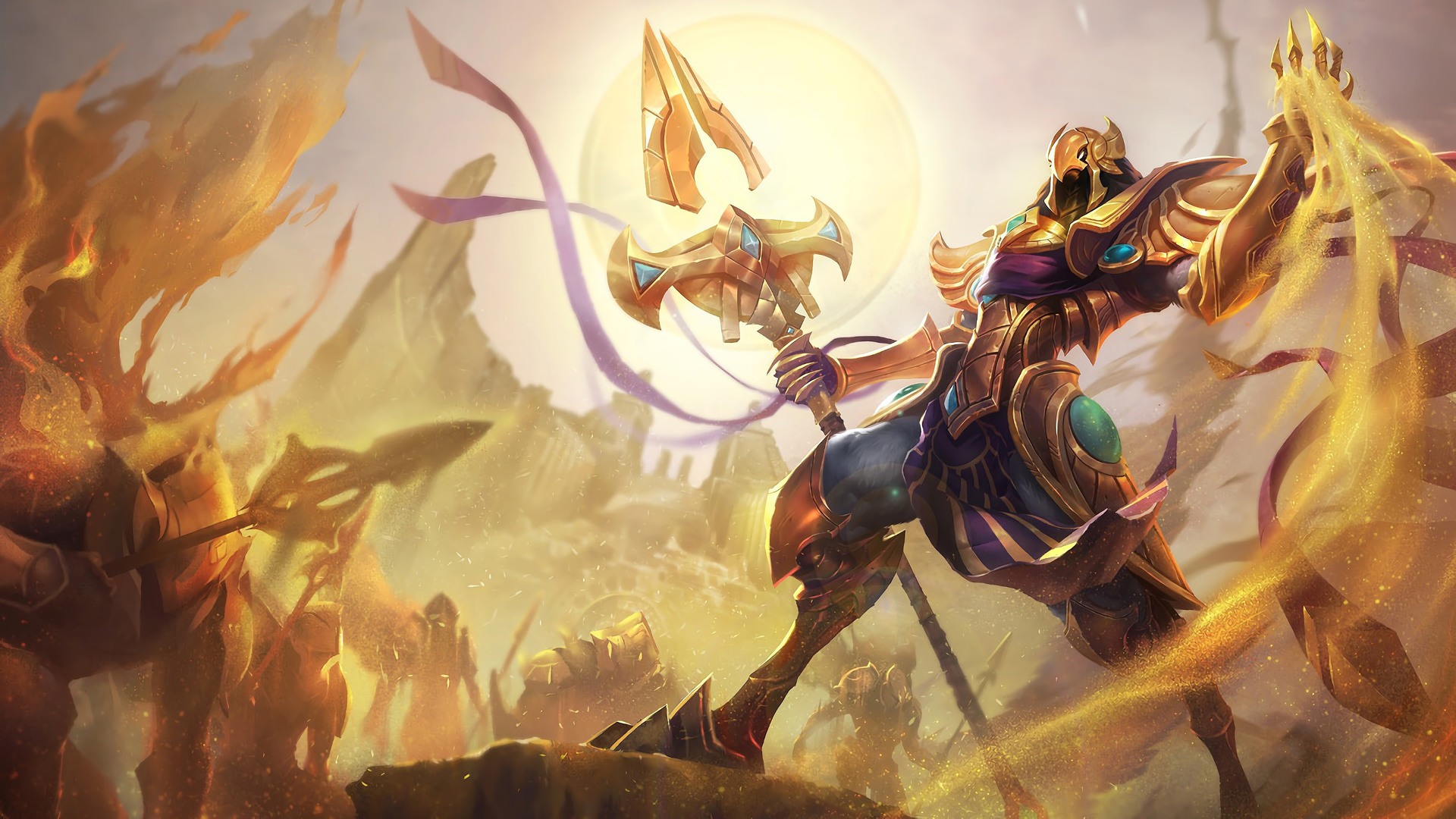
I start mentally preparing myself for several more Malzahar games, but things start to look up. As the enemy carry oversteps, I lock them down, securing an important kill. Pushing out of the base, I help do that again, and again. I’m growing in confidence, learning the range and capabilities of my champion. Eventually, we build on a few of those advantages enough to smother our enemies. The game is a gruelling slog, but a win is a win.
Three victories in a row seems like we’re testing our luck, so we agree to reconvene. The next day, we’re proved right as we hit Shurima. Our team from this region scales, getting stronger later on to account for a very weak early game. But it’s also a terrible hodgepodge—one champion wants to sit at the side of the map and pressure the enemy over time, two others want to run straight into a fight, while another still wants to poke from afar, dealing loads of damage before a fight breaks out. Eventually, we get lucky with a composition that’s perfect for Shurima’s only real jungler, but it takes two tricky losses before we can progress.
Next up, we give ourselves a helping hand. Our greatest obstacle—scheduling—rears its head, forcing a temporary substitution. Thankfully, however, our sub plays at a semi-professional level. Our ranks boosted, we turn to Noxus, where I’m tasked with facilitating our prodigy with a champion I’m passingly familiar with from casual game modes. I contribute a couple of nice engages, but we all know that it’s our new arrival who helps us pick up another win.
GG, EZ
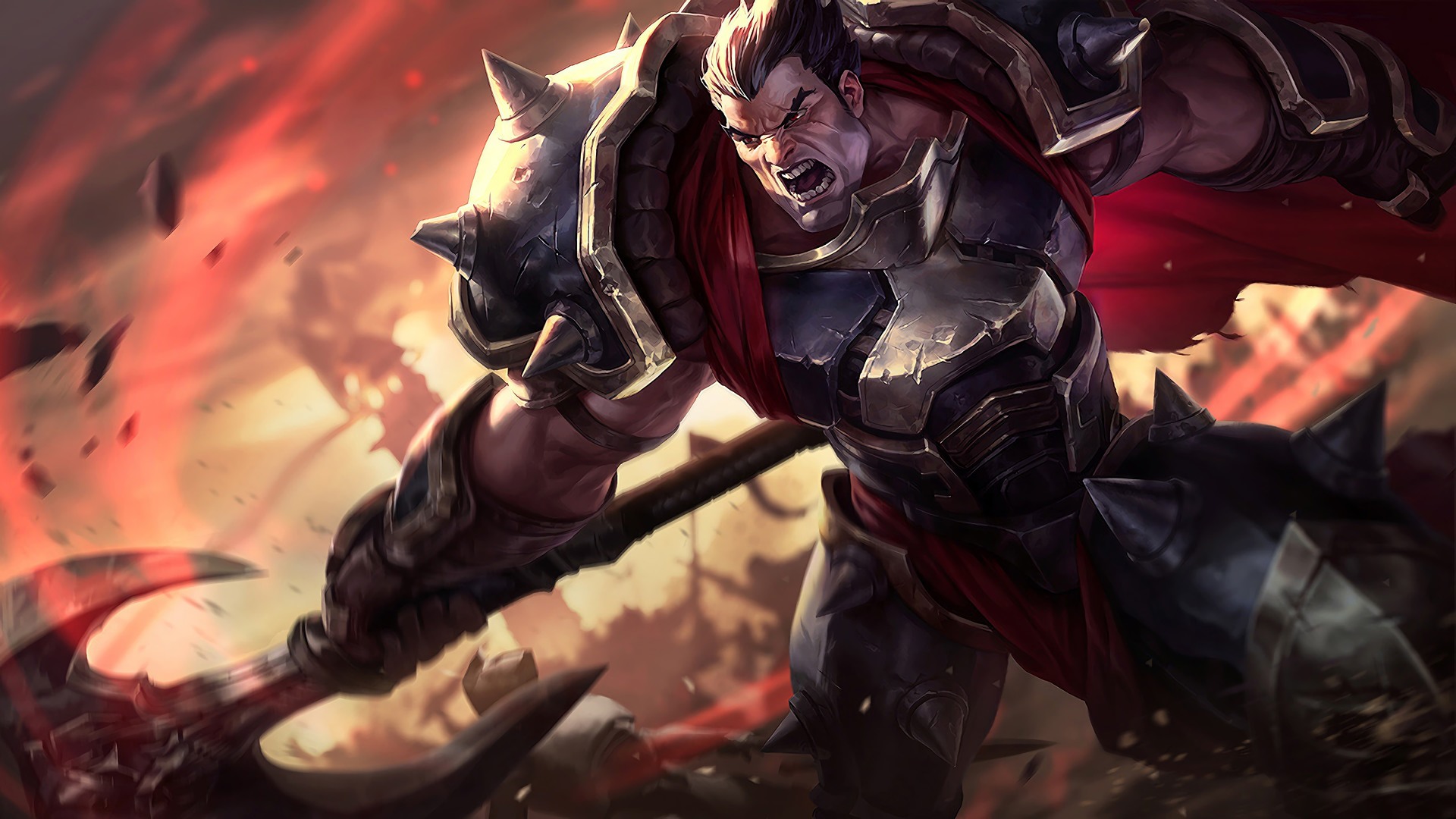
Reconvening the following day, our traditional roster has a run of unbelievable good form. Pirate haven Bilgewater is filled with familiar faces, and our toplaner is able to smash open the enemy base with little resistance. A surprisingly similar strategy awaits us in The Shadow Isles, with just one slightly unconventional twist on the traditional meta. We were looking forward to Zaun—one of the regions made popular by the TV show Arcane—but our array of regional comfort picks was perhaps a little too effective. After a deadly early skirmish netted us a handful of kills, one enemy player quit in disgust. The resulting forfeit a few minutes later didn’t feel great, but it was still another region checked off the list.
Three more regions completed, we moved on to Targon. One of the more difficult propositions, its only-eight-strong roster is filled with three supports and three of the game’s most notoriously tricky champions. Avoiding those seemed key to success, so we opted instead for a stun-heavy composition that was easy to play but would eventually cease to function against the enemy’s late-game team. That ticking clock forced us to play a lot more aggressively and more closely together than usual, and our ball of death eventually rolled through our opponents. Four wins in a row was basically unheard-of, so we decided to cash out early once again.
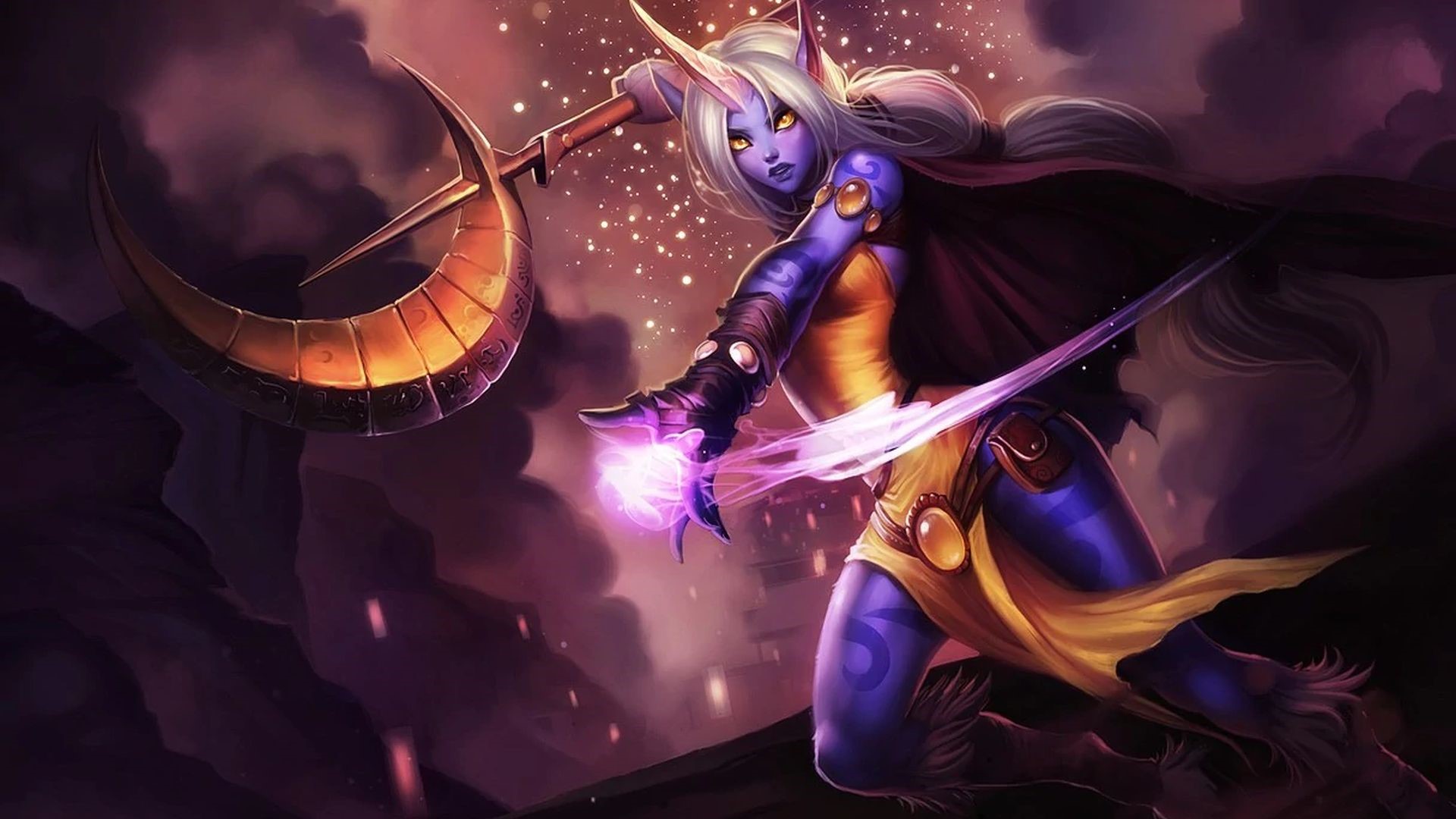
The next time we convened was for Piltover, the other region featured in Arcane. While Vi, Caitlyn, and Jayce are likely equipped with plenty of plot armour, Piltover’s serviceable pool of champions has very little in the way of actual frontline threat, its beefier characters looking to dive past enemy tanks while the rest poke and prod from a distance. It did little to protect against our first enemies, who thrived while we failed to lock them down, forcing a swift do-over.
Our second set of opponents, however, while being far beefier than us, could do nothing in the face of all that extra range. As our carries eventually came online, the ending of what had been a relatively tricky game became almost trivial. After that, Demacia should have been easy. A huge spread of champions fitting almost any role could have given us any composition, were it not for our limited knowledge of its roster. With little wriggle room, I was assigned top, where I lacked the skill to play anyone but Garen, a very simple former main I had abandoned years ago. At best, I thought I faced embarrassment. At worst, I could lose the game single-handedly. Those fears, however, were unfounded—a dominant early game forced another early surrender, and I even walked away with a handful of kills to my name.
Next, Ionia was a delight. The famed ‘lovers duo’ – champions Xayah and Rakan, released as part of a pair who are more powerful when they fight together – proved to be a crucial, if obvious, combo. Backed up by strong performances across the board, there was soon only one region left to conquer.
Getting the Ix
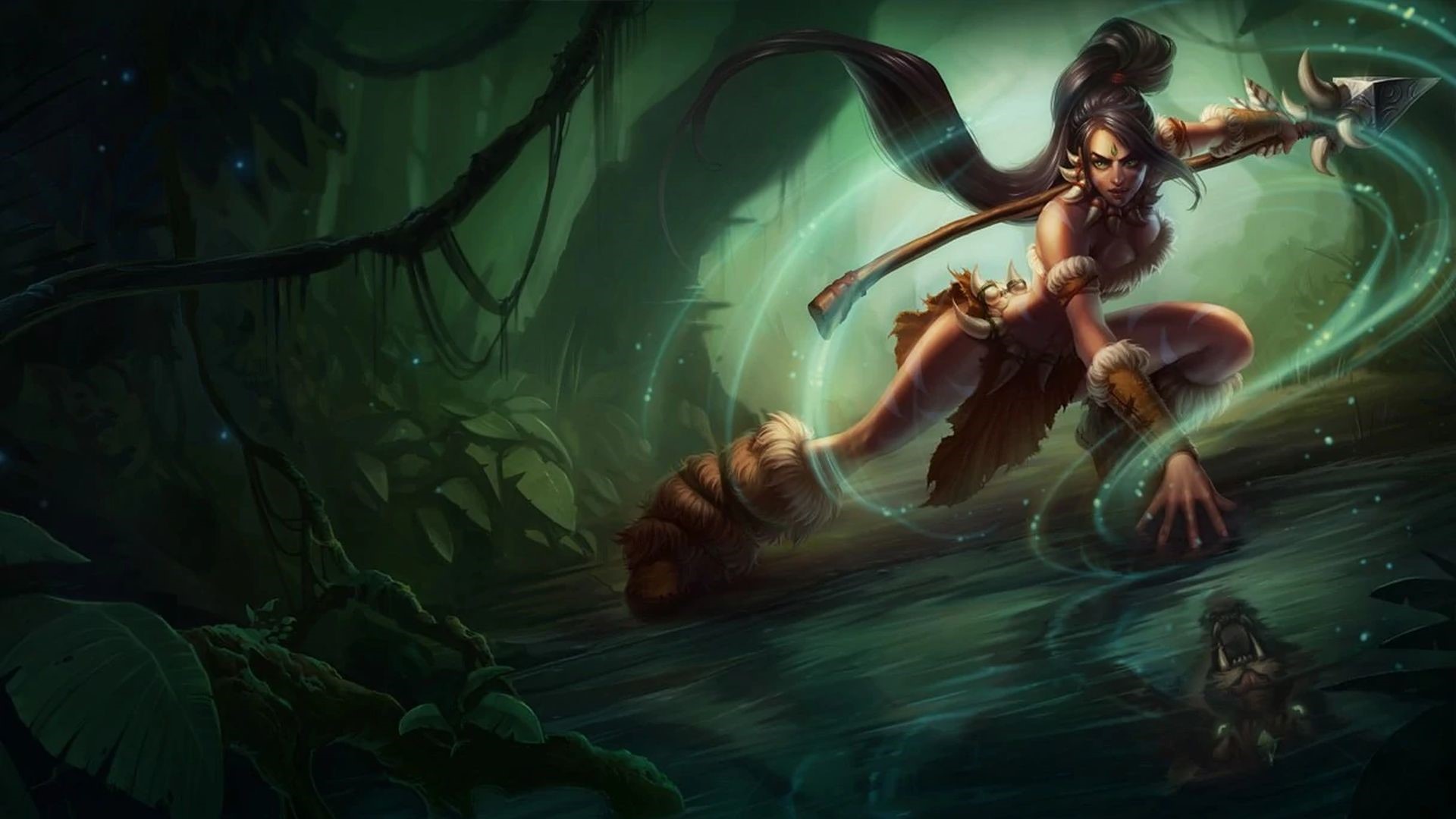
We left Ixtal to last for a reason. League’s newest region simply cannot field a conventional team. With only six champions—three assassins, a one-note tank, no marksman or true support—the roster we try first is so divorced from the meta as to be laughable. Most of us barely even know how to play our champions. The first game is a joke, the second barely better. For game three, we try something new. For game four, we switch it up again. We’re starting to figure out how to play each champion, but we can’t quite bring Ixtal’s heavy teamfighting strengths to bear.
Finally, with another tweak, we pull ahead in one game. This is the best chance we’ve had, and other regions have taught us to capitalise on those chances. We press on, momentum swings back and forth, but we’ve finally learned enough about our champions to keep things steady. Finally, a clutch fight cements our lead, our opponents surrender, and the challenge is complete.
In a game where it’s comparatively easy to play for yourself but still win, we’d spent years learning what made our favourite champions tick, and I wonder if we’d fallen into that habit. In the end, we did much better than expected – of 20 games, we lost only seven, four of those to Ixtal. Rather than the difficulty, the most exciting aspect of the challenge was that it taught us to think a little differently about League again. It encouraged us to try out new characters, reconsider how to play together, how to find the bizarre even within a long-held meta. Not much has changed beyond some fancy digital badges, but after playing for so long, it doesn’t take much to make things feel a little new again.
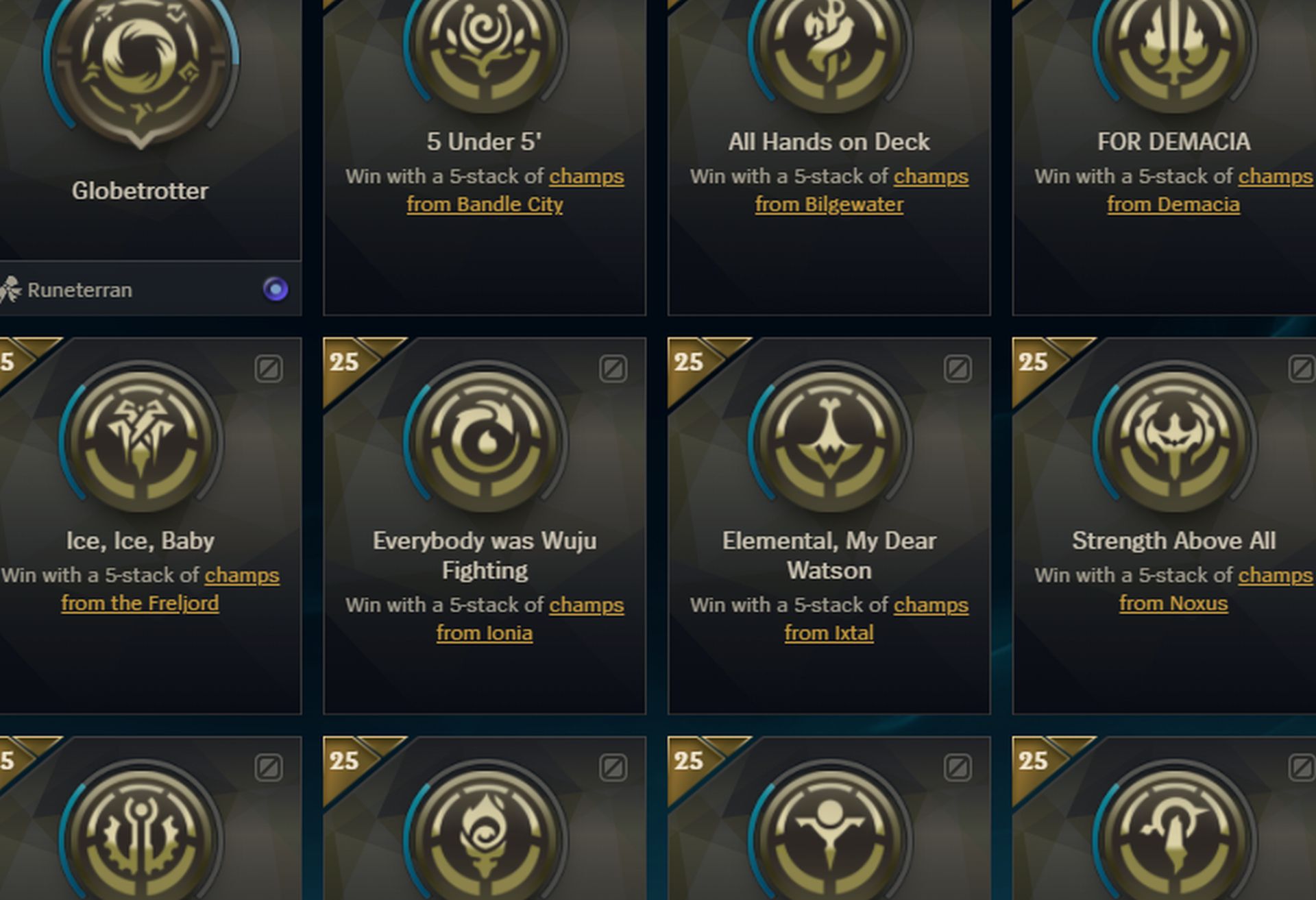
Source link

